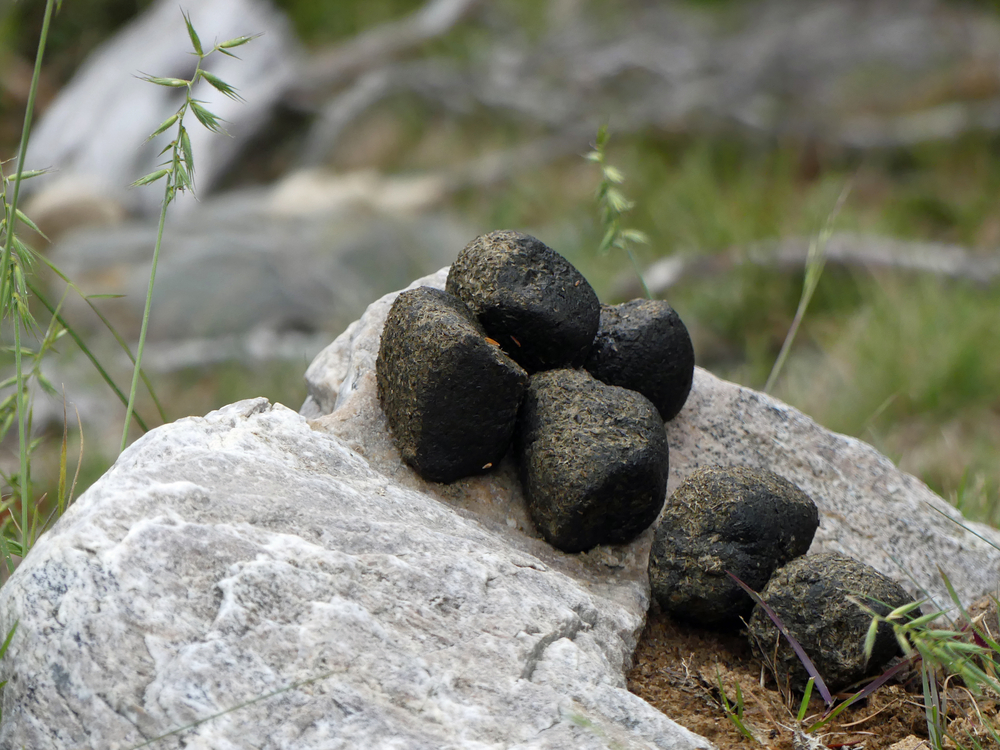Why do wombats do cubic poos?

Poo comes in many different sizes, from the microscopic poo of the smallest invertebrates to the largest poo of the African elephants who can each produce over 50kg per day. It also comes in many shapes, such as tubes (dogs), pellets (rabbits) or splats (cows), but the wombat is unique in the animal kingdom in that it produces cubic poo, and lots of it – around 80–100 cubes per night.
The wombat is a large relative of the koala, native to Australia. It is solitary and nocturnal, living in underground burrows during the day but coming out at night to forage on grasses and other vegetation. It also sleeps a lot; an average of 16 hours per day. As it is nocturnal, the wombat has very poor eyesight, so it relies on its sense of smell to navigate and find food.
So, what is poo for?
Poo is produced by all organisms – and species have adapted to utilise it in many different ways, such as a mechanism for seed dispersal, or a food source for animals including dung beetles. Poo can also provide information about the individual who produced it and their diet. The different textures, size, shape and smell can all help to identify the species that produced the poo – this information can be used to survey elusive animals such as the otter (which produces a distinctly fishy-smelling “spraint”, and can also give an estimation of how long ago the poo was produced. Even dinosaurs have left fossilised poo behind, called coprolites.
However, poo is also very smelly, so it can be used by individuals to communicate their presence to others. Why is this needed? Although contests are frequent in the animal kingdom, they can be fatal – so are avoided if possible. One way of avoiding conflict is to mark your territory with a scent such as poo – this provides information on who you are and where you live.

Image credit: shutterstock
The wombat is highly territorial, so uses its cube-shaped poo to mark its territory, preventing conflict. Wombats have been found to differentiate between various poos and show avoidance behaviour when presented with poo produced by predators and other male wombats. The hormonal content of poo can also be examined, for example, so that males can tell when females are most fertile.
Wombats deposit poo outside their burrows and on the tops of rocks and logs, where they are more easily found by other wombats. The distinctive shape is an advantage as the flat sides of the cubes ensure they do not roll off their precarious locations.
But how is cubic poo produced?
Wombat poo is cubic, not because the wombat has a square-shaped anus, but because it has a very long and slow digestive process, typically 14–18 days, which allows the digestive matter to become extremely dry and compacted. The wombat also has a very long digestive tract, allowing it to absorb the most nutrients and water from its food. The first part of their large intestine contains horizontal ridges that probably mould the poo into cubes, whereas the last part of the large intestine is relatively smooth, allowing the cubic shape to be maintained. The highly compacted nature of the poo means that the rectum is unable to contour the poo into the more usual tubular shape.
So, the wombat, with is nocturnal way of life, poor eyesight but excellent sense of smell, uses poo as its main way of telling who lives where and if there are any strangers in the area (thus avoiding conflict), and as a way of increasing its reproductive success. It produces cubic poo as a result of its diet and long digestion. And, the cubic poo is the perfect shape for sitting on top of rocks and logs as it doesn’t roll away. Poo can be clever, too.
Louise Gentle is a Senior Lecturer in Behavioural Ecology at Nottingham Trent University.
This article was originally published on The Conversation. Read the original article.


